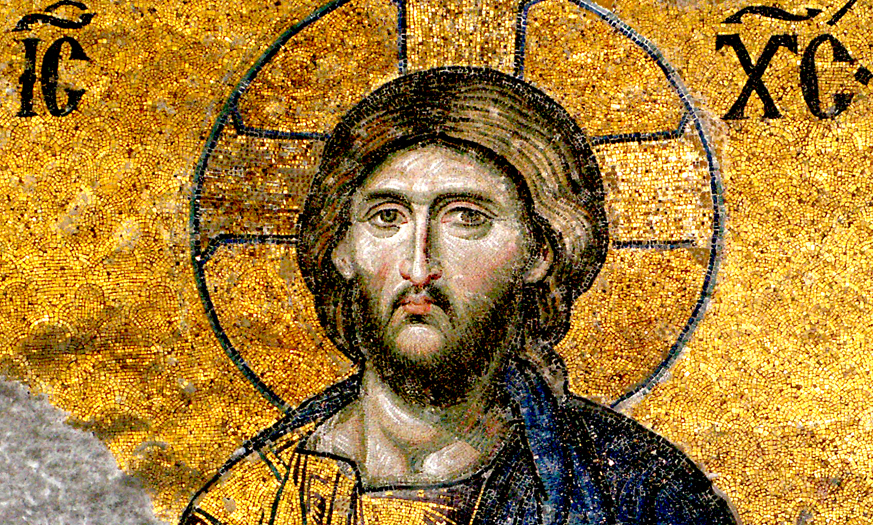
On Christ’s Two Wills: Responding to William Lane Craig
A couple of weeks ago the renowned Christian apologist and philosopher, William Lane Craig caused a small flurry on the internet by declaring his rejection of the orthodox doctrine of the two wills of Christ (dyothelitism), and his preference for another Christological aberration known as Apollinarianism.
I have a great deal of respect for Dr Craig and often enjoy listening to his discussions and debates. I also think it is possible to make too much of his heresy—especially since I think his pronouncements are (at least partly) the result of a misunderstanding.
Yet, because I have done quite a bit of reading and thinking on the topic, I thought I would offer a short response.
Two Wills, Two Persons?
Let me begin with a key quote from the podcast that explains Craig’s concern and reasoning:
The key question to be answered is “is the will a function of a person or a nature?” Who or what wills things freely? If you say it is persons who will what they do, then you will say there is one will in Christ, though we have two natures. On the other hand, if we say, we have two natures, and wills belong to natures, then you are going to have two wills in Christ, and, if you say that, then it really becomes difficult to avoid Nestorianism. How can there be two thinking willing subjects in Christ and yet there not be two persons? (4:28)
By way of response, I would like to make and unpack three statements.
1. Will belongs to Nature and Person
Dr Craig worries that if we think of Christ as having one will per nature, we will end up with two willing subjects.
Human desire is experienced by individuals. But the cause of that desire is the common and single human nature that we all share.
But straightaway this seems to be a misunderstanding of what the champions of dyothelitism are talking about. Whereas Craig is thinking about the individual experience of willing—what particular persons want—for theologians such as Maximus the Confessor, “will” means the nature that causes persons to want what they want.
For example, (normal healthy) humans desire love and air, and that desire is experienced by individuals. But the cause of that desire is the common and single human nature that we all share. In technical language the difference here is between “natural will” (theléma/thelésis in Greek) and “gnomic will” (natural will manifest in an individual hypostasis or tropos).[1]
So when post-Chalcedonian orthodoxy says Christ has two wills, it doesn’t mean that he has two competing centres of conscious willing. It means that he has two sets of desires that correspond to his natures. He wants (1) what God wants and (2) he wants the things that a human properly wants.
2. Christ’s Divine Will is expressed Through his Human Existence.
Christ is one Person who wants two different sorts of things. That doesn’t seem too problematic; even less so when those two wills/desires align, as they often do (c.f. Deut 10:12-13).
But what happens, say, in the wilderness (Luke 4:1-13) or in the garden of Gethsemane, when Jesus’ natural and proper human desires (e.g. to eat and live) collide with the will of God? The answer is that Jesus chooses God’s will. He chooses to live, not by bread alone but “by every word that comes from the mouth of God” (Luke 4:4 c.f. Deut 8:3). He seeks “not my will but yours” (Luke 22:39-42).
Paradoxically, this choice of God’s will is itself an affirmation of his humanity. Since humans were made to faithfully represent and obey God (Gen 1:26-28; 2:15-17), Jesus is never more human than when he is doing just that. In denying his natural human desires, he proves that he is a (the) true man (c.f. Heb 2:10-12). We’ll say more about this at the end.
3. Christ’s Divine Will is expressed Beyond his Human Existence.
Meanwhile, it is also important to note that there is more to God the Son than the man Jesus. Although he does his greatest deeds as a man (c.f. John 5:20-21), he does other things apart from it. As eternal Word, Jesus is co-creator and sustainer of the universe (Heb 1:3; Col 1:17). His will must thus include (for example) the position and speed of every electron on every star and planet and hydrogen molecule in the entire universe.[2] Such infinite bandwidth and power is far beyond anything that might be squeezed into a human mind.
Jesus knows (and wills) as God outside time, and he knows and wills things as a human creature.
Jesus, then, exists as a man within creation, but he also transcends creation.[3] This necessarily commits us to the idea that he has more than one subjective experience. He knows (and wills) as God outside time, and he knows and wills things as a human creature.
But this still doesn’t, despite Dr Craig’s concerns, divide Christ into two persons. It isn’t as if we have two Christs in two places at the same time—indeed it can’t be like that because God is above space and time. I have argued elsewhere (here and here, for example) that a helpful analogy for this is an author writing himself into a novel. The author doesn’t cease to be the author or leave his office to “turn into” a virtual entity. He remains himself, and yet inserts himself into the world he is creating.
I think Dr Craig should be able to accept this. He himself speculates that God is both outside time, according to his native existence, and within it through his involvement with creation.
More significantly, he already embraces a dual consciousness model in his “neo-Apollinarian” Christology where he imagines the Logos taking the place of the human soul/mind of Jesus—his omniscience buried in the man’s subconscious, yet still operating at full strength (see link).
I have concerns about both these ideas, particularly the second. Yet I suspect that what Dr Craig means by “soul/mind” is not too far from what Chalcedon means by “Person” or at least what the Alexandrian tradition means when it speaks of Christ as a theandric unity.[4] When he connects his ideas to the Byzantine doctrine of enhypostasia,[5] the suspicion becomes stronger.
Barking up a Better Tree
The truth is, we don’t really know how the eternal Son and Jesus are the same person. The Bible tells us that it is so; orthodox theology tries to hedge the fact around with some positive and negative deductions. We might fumble around with metaphors, as I have tried to do above.
But we don’t know the mechanism, and the more we try to guess at it, the more we risk going off the rails. The lines between the transcendent God and creaturely existence become blurred—Christ’s humanity and his divinity become muddied.
The doctrine of enhypostasia and the doctrine of the two wills make sense because there is a fit or congruence between God the Son and human nature.
And yet we can say a little more, I think. The doctrine of enhypostasia just mentioned, is important. It is important for the reason Dr Craig mentions—i.e. it asserts that the individual who is Jesus is the same individual who is God the Son.
But the doctrine of enhypostasia and the doctrine of the two wills make sense because there is a fit or congruence between God the Son and human nature. When Jesus chooses God’s will over his own, he is showing, not just his humanity and divinity, but his particular identity as God the Son. Dr Craig rejects the Gethsemane prayer as evidence of two wills because Jesus doesn’t say “my will be done” but “thine” (7:19). But this is exactly how the Trinity works—everything comes from the Father and is expressed in and through the Son: God from God; Light from Light. The Person who appears as the obedient man Jesus is, from eternity, the Father’s eternal Image, Radiance and Word (c.f. John 1; Heb 1; Col 1). His will is always his Father’s will—but it also his own because that’s his way of being God. In Gethsemane, he simply expresses this in a new sphere of existence. In willing as a man he also wills as God the Son.
This is the thing to be most excited about. Not that we can understand the incarnation, but that it is possible. We were made such that he could become one of us. And in doing so, he has made us such as he is.
… to all who did receive him, to those who believed in his name, he gave the right to become children of God—children born not of natural descent, nor of human decision or a husband’s will, but born of God. The Word became flesh and made his dwelling among us. We have seen his glory, the glory of the one and only Son, who came from the Father, full of grace and truth. (John 1:12-14)
And
Both the one who makes people holy and those who are made holy are of the same family. So Jesus is not ashamed to call them brothers and sisters. (Hebrews 2:11)
POSTSCRIPT:
It is a shame that in responding to this post, Dr Craig (and whoever framed the question for him) chose to respond to the marginal definition of “gnomic will” that I had already mentioned in footnote 1: i.e. that the “gnomic will” is the idiosyncratic choice of an individual as it diverges from the natural will. This was a very specific definition deployed by Maximus the Confessor in polemical contexts.
Elsewhere, he and others used it as I have here—in a more general sense to mean the lived expression of Christ’s two natural wills in the one individual willer (Christ). Here is Maximus again:
The Fathers … openly confessed the difference between two natural, but not gnomic, wills in Christ. They did not however say that there was any difference of gnomic wills in Christ, lest they proclaim him double-minded and double-willed, and fighting against himself, so to speak, in the discord of his thoughts, and therefore double-personed … For evil consists in nothing else than this difference of our gnomic will from the divine will. (Opuscule 3, 56B)
Writing later, John of Damascus makes a similar point:
[I]n the case of our Lord Jesus Christ, since He possesses different natures, His natural wills, that is, His volitional faculties belonging to Him as God and as Man are also different. But since the subsistence is one, and He Who exercises the will is one, the object of the will, that is, the gnomic will , is also one, His human will evidently following His divine will, and willing that which the divine will willed it to will. (On the Orthodox Faith, 2.22)
[1] Admittedly there is a bit of terminological complication here because Maximus the Confessor uses “gnomic will” for both the individual expression of a nature (as I am using it here) and also as a term for the tendency of individual fallen humans to want things that clash with their natures (see more here). If we use the first meaning, Christ has his own gnomic will like everyone else. If we use the second meaning, Maximus would deny that Christ has such a thing, though he would certainly still affirm the idea that natural wills are only expressed in individual hypostases.
We should note that Maximus, who stresses this singleness of will (and states it explicitly in his debate with Pyrrhus), is much less interested than we are in the diverse “willing” of human free-will; his focus is on the commonality of what undergirds those decisions. Of course he would also stress that human willing no longer cleaves to its created nature post-Fall—except in the case of Christ. Interested readers who would like to read might enjoy two helpful overviews from a Catholic and Eastern Orthodox perspective (see too the link earlier in this footnote).
[2] I should acknowledge that I am being a little imprecise here. Things like the disposition of creation properly belong to the category of “counsel” (boulé) rather than natural will. They pertain to decrees God makes in harmony with his will. But for our purposes, they still fall in the category of things the persons of the Trinity want and do.
[3] The technical term here for the Son’s existence beyond his humanity is the “extra Calvinisticum”. It is named for a dispute between Calvinists and Lutherans, but the theological idea itself is much older (see more here).
[4] Christology tends to come in two flavours: Antiochene and Alexandrian. Antiochenes stress the radical distinction of God from creation and want to avoid any mixing of the human and divine in the human existence of Christ (my author analogy is fairly Antiochene). The challenge for them (us) is preserving the unity of Christ’s Person. Alexandrians, conversely, look for ways to show how the two natures work together in the humanity of Jesus such that the man is also God—a theandric unity (a standard analogy depicts his mortal life as iron heated by fire). The challenge for them is to avoid turning Jesus into a chimera or hybrid—not quite man and not fully God. Dr Craig’s Neo-Apollinarianism is strongly Alexandrian.
[5] In the theology of the Cappadocian fathers, hypostasis means an individual instance of a nature—e.g. a particular human being or a particular Person of the Trinity (as opposed to “humanity” or “divinity” in general). The doctrine of enhypostasia wants to suggest that with Christ, there is only one individual and that (somehow!) the human individual is the same as the divine. It does not mean that the divine individual is “inside” the human individual (though I fear Dr Craig’s model might suggest that.)




